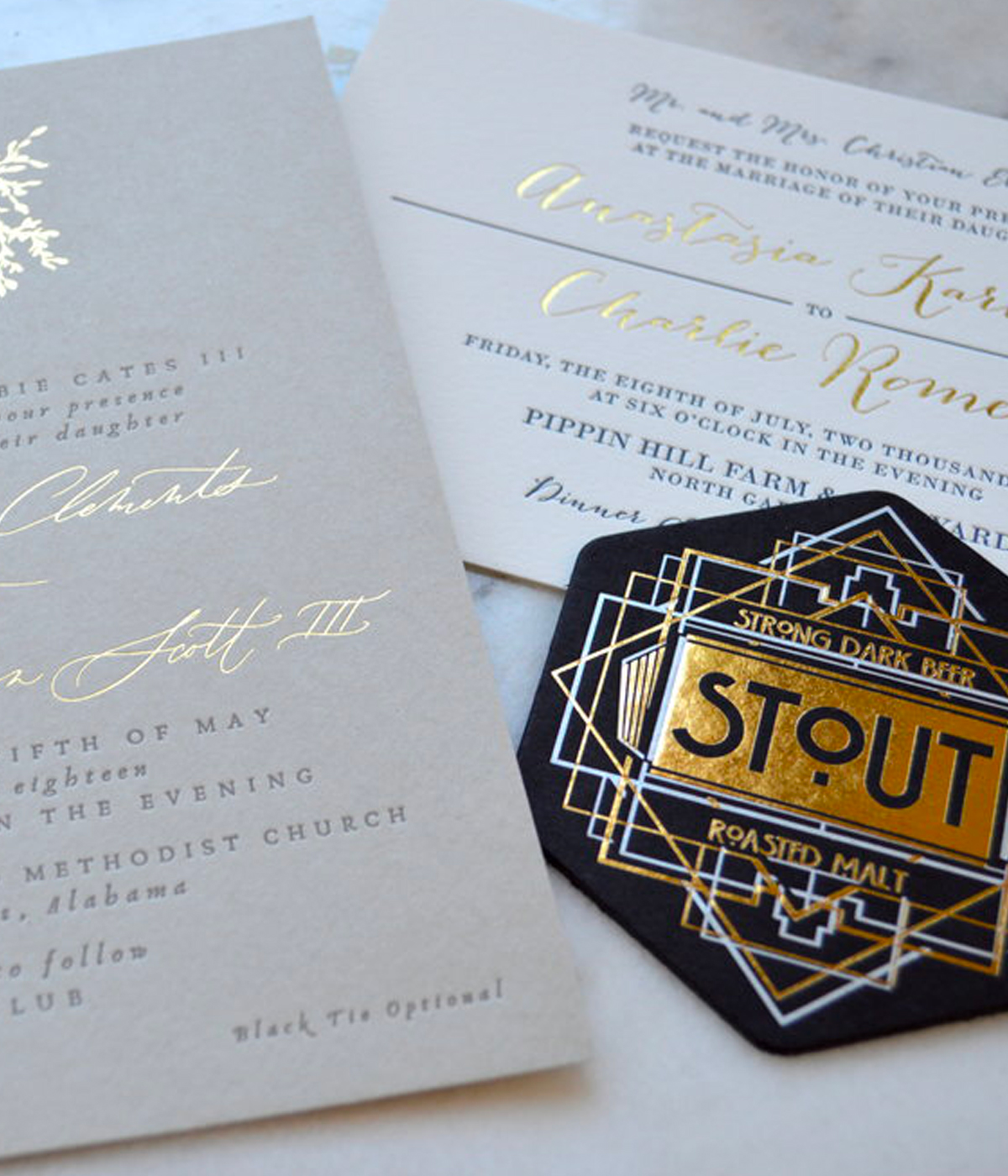
Foil Stamping: The Good, The Bad & The Shiny
No two foil jobs are the same. Calibration is key. A watchful expert eye is imperative.
There are few things more satisfying than watching a piece of foil-stamped stationery catch the light and running your hand over the impression its left. One of those things is successfully running said stationery through the press and having it come out perfect. This is, by no stretch of the imagination, an easy thing to accomplish. In fact, this process has been frustrating printers since Ernest Oeser filed for the first hot stamping patent in 1892, and it’s fair to say some time before that. It is also fair to say that the process hasn’t changed too much since then either.
The hot foil stamping process itself is relatively simple, foil is pressed onto paper using a heated magnesium block. Pretty straightforward, but like most things the devil is in the details, and in this case, he is constantly playing tricks on the printer. In a perfect world, the press can be set up, turned on, and left to consistently pump out eye-catching works of art. However, in this perfect world foil stamping does not exist. In order to get that perfect stamp, there is an extraordinary number of factors that all need to line up. The humidity of the air, the depth of impression, the amount of time the plate is in contact with the foil, and the temperature of the plate all play crucial roles in getting the final product to turn outright. Did I mention that these all change foil to foil and paper to paper?
In order to get a better feel for the foil stamping process, I sat down with The Laughing Owl’s foil guru, Eric, while he ran a job through one of the Owl’s antique Heidelberg Windmill presses. The main thing I found out from this is that no two foil jobs are the same. There aren’t many rules of thumb, but set-up methods instead. Each job must be dialed in just right and carefully watched over, sometimes needing to be recalibrated throughout the job. He filled me in on some things that he watches out for and that can affect the stamp. Some of these are: If the design is patchy and the coverage isn’t full, chances are the plate temperature is off. If the impression depth is not even, makeready may be needed to even things out. If the alignment is off, well that could be anything from the plate expanding due to heat or the paper not feeding correctly. Sometimes the motion from the paper being auto fed into the press can knock things out of alignment which means that a particular job may need to have each piece hand fed. There is a seemingly endless list of things that can affect foil stamping so much so that Eric said, “It almost makes you superstitious”.
All potential and imminent obstacles aside, finishing a well-done foil job is a very rewarding thing. It is a skill that takes a very long time and a lot of trial and error to be any good at. Even longer to claim to master. All the time and effort are well spent because crafting any stationery that is as visually pleasing as a well-done foil project is a rare thing. Luckily this is something Eric and The Laughing Owl team are extremely good at and do often. The Laughing Owl may ship beautiful foil stamped works all over the world and those works are shared and treasured by many, but the satisfaction of putting the finishing touches on an ornate foil invitation is what the Owl’s hoot about and is all their own.